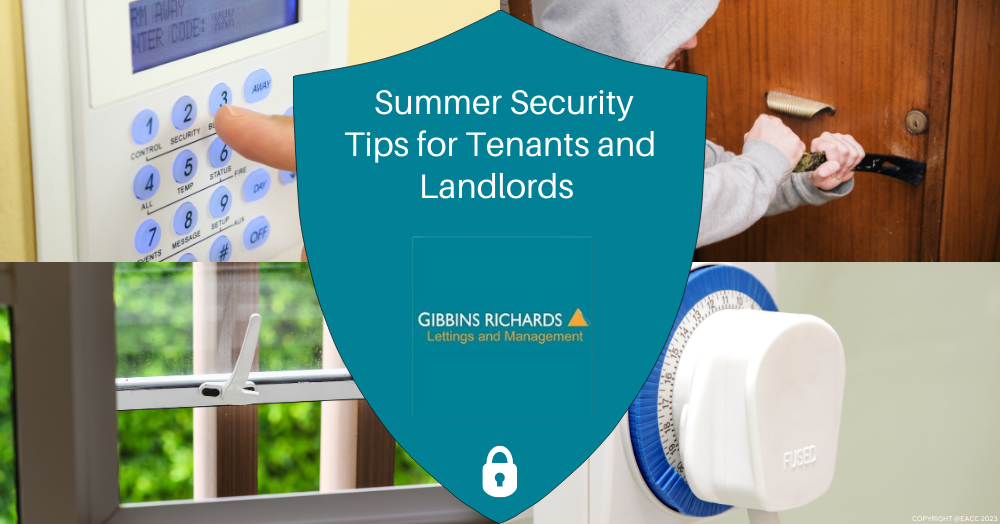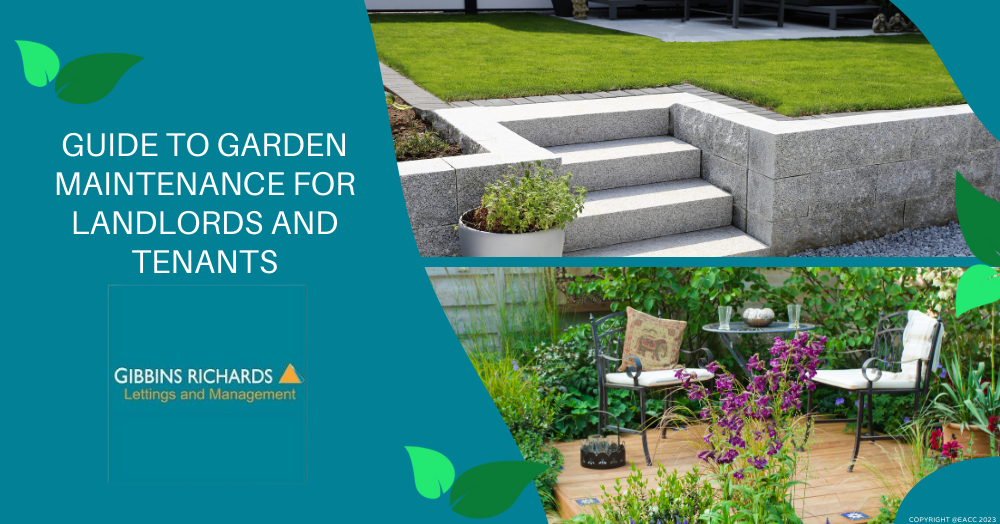Blog
- Details
- Hits: 368
It’s not just birds, bees and butterflies that come out in force in summer – unfortunately, burglars step up their activity, too.
With many people going away on holiday (leaving homes empty) and others opening their windows and doors when temperatures rise, burglary rates spike in summer.
So, how can tenants and landlords stay one step ahead of the crooks and avoid the financial and psychological cost of a break-in? The answer is to be vigilant and work together.
Tips for tenants
- Always check that you’ve locked all windows and doors before leaving home.
- If the property has an alarm, use it.
- Don’t leave expensive items such as laptops on show near windows where passers-by can see them.
- Keep the front of the property tidy. Messy bins and piles of junk mail send the message that no one’s home.
- If you’re going away for more than 14 days, you may need to notify your landlord (check the details of your contract).
- Before you go away, set a few lights on timer switches so the property looks lived in.
- Keep sheds, garages and back gates locked. Often, burglars travel empty-handed to avoid suspicion and use tools they find in sheds and garages to break in.
- Take out contents insurance.
Tips for landlords
- It’s your legal responsibility to provide a safe and secure property, so make sure all doors and windows lock. This includes locks on sheds and garages.
- Consider installing security measures such as deadbolts, door chains, peepholes, motion sensor lights, video camera doorbells and alarms.
- Keep trees well-pruned so they don’t provide cover for burglars.
- Check your comprehensive landlord insurance is up to date. Schedule in your diary when it’s due for renewal.
- Consider spreading gravel/pebbles at the front of your house and installing a gate. Anything that makes a noise when you enter a property can put burglars off.
And if the worst happens
In the unfortunate event of a burglary, the tenant should call the police and then the landlord or letting agent. The landlord should act swiftly to secure the property and repair any damage. When dealing with the aftermath of a burglary, always refer to the contract you’ve signed. Generally*, the landlord is responsible for repairing damage to the building, such as broken windows or doors, and replacing items included in the property agreement (unless it can be shown the tenant was negligent). The tenant should claim for the loss of personal items on their insurance.
Contact us here at Gibbins Richards Lettings and Management Ltd today to learn about our property management services.
*Disclaimer
The contents of this article should be used as a general guide and do not constitute legal advice.
- Details
- Hits: 434
Garden maintenance can be a thorny issue between tenants and landlords, so here’s a useful guide to help avoid confusion.
Now that spring is here, there are lots of tasks to be done in the garden, such as watering, weeding and mowing.
But if the garden is part of a rental property, who is responsible for doing them?
That’s a question that has vexed many tenants and landlords over the years (garden maintenance is the cause of about a quarter of all deposit disputes*).
So, here’s an outline of responsibilities for maintaining outdoor areas at a rental property.
But first… a disclaimer
This article provides a general overview of common issues; it does not constitute legal advice. If you’re in any doubt about what’s expected of you, always refer to your tenancy agreement.
Tenant responsibilities
It’s up to the tenant to keep the garden in a good condition and ensure that at the end of the tenancy, it’s in the same state as it was at the start. This means:
- Removing rubbish.
- Doing simple tasks like weeding and sweeping up leaves.
- Watering (if there are healthy plants when you move in, they should still be alive when you move out).
- Ensuring shrubs and lawns don’t get overgrown.
- Repairing any damage that you’ve caused during the tenancy. For example, if you break an item of garden furniture, you need to fix it.
Other key points
- If you’re green-fingered and want to make changes to the garden, discuss this with your landlord first.
- A landlord is not obligated to provide gardening equipment; however, they may supply items like brooms or trowels to help you with maintenance.
- If you’re uncertain about what state the garden was in when you moved in, look back at your check-in report for a detailed description.
Landlord responsibilities
The landlord is responsible for big jobs that require specialist training, such as:
- Lopping branches off tall trees.
- Replacing damaged fences.
- Fixing a shed roof.
- Repairing walls or fences.
- Pest and insect control (unless it’s clear that the tenant has caused the problem). So, if there’s a serious issue with bees or wasps, the landlord is responsible for ensuring the health and safety of the tenant.
Other points
- Consider minimising possible causes of friction by planting low-maintenance, drought-resistant plants and removing structures such as greenhouses.
- Look at outdoor areas when you carry out periodic inspections so if there are any issues, you can raise them early.
Contact us here at Gibbins Richards Lettings and Management Ltd today to learn more about our property management services.
* The Dispute Service.
- Details
- Hits: 381
How can landlords and tenants combat condensation and mould? Read on to find out.
Condensation and mould
The two are often bundled together because if you’ve got condensation, there’s a good chance it won’t be long before you’re battling mould.
Condensation can be caused by warm air hitting cold surfaces or by lots of humidity in the air. The air cools and droplets form, creating a damp environment – and a perfect breeding ground for mould. Mould grows in black, green or brown spots. It’s most commonly found in bathrooms and kitchens but can thrive in any damp or humid location.
Responsibilities
Both landlords and tenants have roles to play in preventing and tackling mould. The landlord must ensure there are no structural or maintenance issues that could cause mould and remove mould impacting a tenant’s health and safety. Tenants should keep the property clean and adequately ventilated and report signs of mould to the landlord.
If the cause of mould isn’t structural, it could be down to tenant behaviour (more on this further down). It’s important to look for constructive solutions to resolve the issue rather than getting involved in a finger-pointing exercise.
Steps a landlord can take:
A dry home with lots of fresh air is the best weapon against mould. To achieve this, you should:
- Ensure the property is well-ventilated.
- Check the heating is working well.
- Insulate the property.
- Look for signs of mould during regular inspections and ensure extractor fans are working.
- Promptly repair issues such as leaky plumbing and guttering, missing roof tiles and damage to the damp-proof course.
- Regularly clear out gutters and drains.
- Act quickly if mould appears. Remove it and apply anti-mould paint.
- Discuss the issue with tenants to raise awareness.
How tenants can help. Ask tenants to:
- Avoid hanging clothes to dry indoors with the windows closed.
- Leave a gap between furniture and walls of at least 10cm so the air can circulate.
- Open windows regularly.
- Use the extractor fan when cooking and showering.
- Wipe down wet surfaces such as shower screens and curtains.
- Close the kitchen door when cooking to stop moist air moving to other parts of the property.
- Report signs of mould and any necessary repairs to the landlord or letting agent.
For more advice about managing your rental property, contact us today.
- Details
- Hits: 383
Five Priorities Landlords Need to Know
As a landlord in 2023, it’s fair to say there are a lot of challenges on the horizon. From changes to rental rules, tax upheaval, mortgage mayhem… it’s all going on.
But the first thing to remember is your tenants and their experience of your property. It’s all too easy to move new people into your vacant rental and forget about them until a problem arises. So why not try and make the tenancy run as smoothly as possible from the outset?
In this three-minute read, we look at five priorities a landlord should consider.
Create a property welcome pack
It costs virtually nothing apart from time and a little bit of patience, but so many landlords don’t bother to provide the basic information a tenant needs to improve their tenancy period.
A welcome pack could contain the following:
- Landlord and agent contact details
- Where to find instruction manuals
- Location of electric/gas meters
- How to work the thermostat
- Tenant’s responsibilities
- What to do in the event of an emergency
You may have the information already, but putting it in one place positions you as a mindful and helpful landlord. Type it out, laminate it and make sure it’s in a place where the tenant can find it. Once done, it will also benefit future tenants.
Improve energy efficiency
For most landlords, getting a vacant property let is the main priority. But why not use short vacant periods to start some energy efficiency improvements? Get the boiler serviced, make sure all the lightbulbs are energy-saving ones and check the condition of floor/loft insulation.
Get informed
There are numerous legal reforms happening which will affect private rentals – tax changes, eviction notice reforms, pet-friendly tenancies and so on. Make sure you’re up to date and know what’s going on so it doesn’t come as a surprise later. Being informed and prepared should be a priority for all landlords.
Mortgage check
When does your mortgage deal end? Are you on a fixed or variable buy-to-let deal? It’s essential you know the answers to these questions so you can prepare yourself for getting a new deal when the time comes. Get in touch with a mortgage broker if you’re nearing the end of a mortgage deal so you can see what’s available.
Communicate
Whether it’s with your tenant or your managing agent, clear communication should be a priority for all landlords. While you don’t have to engage in weekly chats with your tenants, checking in with them periodically is a great way to keep on top of things such as repairs and maintenance and to avoid any unexpected issues or call-outs out of hours.
A short text or email to ask how it’s all going is non-intrusive yet shows willingness to set things right if needed.
Are you looking to let a vacant property? Get in touch with our team at Gibbins Richards Lettings and Management Ltd.
- Details
- Hits: 420
How to Stop Vermin Invading Your Home














